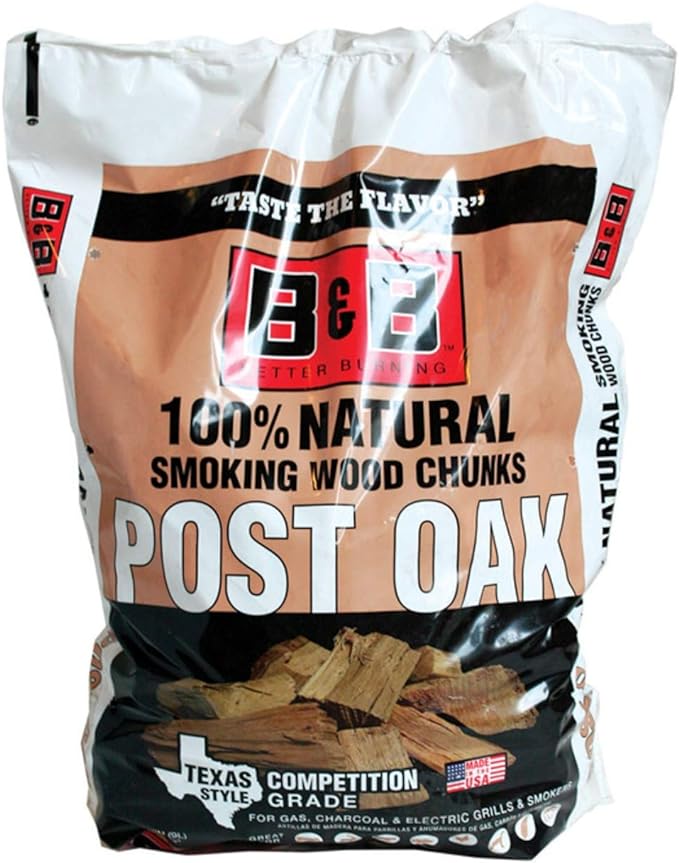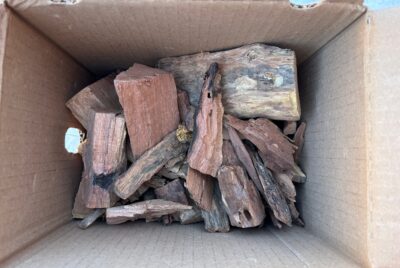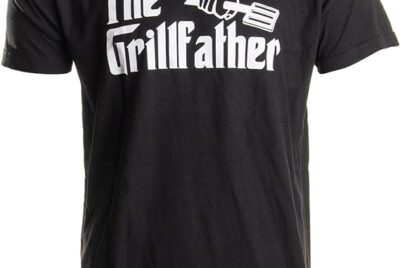The Art of the Offset BBQ grill
Hey there, BBQ guys and gals! If you’re looking to take your grilling experience to the next level, it’s time to consider the wonders of an offset BBQ. In this guide, I’ll walk you through everything you need to know about offset BBQs, from understanding their mechanics to mastering the art of cooking on them. So, grab your apron and let’s dive in!
What is an Offset BBQ? An offset BBQ, also known as an offset smoker or horizontal smoker (I tend to use the terms here interchangeably), is a type of barbecue grill that utilizes indirect heat to cook food. Unlike traditional grills where the heat source is directly beneath the cooking surface, an offset BBQ features a separate firebox connected to the cooking chamber by a chimney. As you can see in the picture… there is a “cooking chamber” and a “fire box”- two different areas.
Why Offset BBQs are popular? Offset BBQs have gained popularity among BBQ enthusiasts for several reasons. Firstly, they offer superior smoke flavor due to the indirect heat and smoke circulation around the cooking chamber. Additionally, their large cooking surface allows for cooking large cuts of meat or multiple items simultaneously, making them ideal for gatherings and parties.
Advantages of Offset BBQ grills- Why
- Enhanced flavor profile One of the main advantages of cooking on an offset BBQ is the rich, smoky flavor it imparts to the food. The slow cooking process allows the meat to absorb the aroma of the wood smoke, resulting in tender, flavorful dishes.
- Versatility in cooking methods Offset BBQs are incredibly versatile and can be used for a wide range of cooking methods, including smoking, grilling, roasting, and even baking. Whether you’re cooking ribs, brisket, chicken, or vegetables, an offset BBQ offers endless possibilities for culinary creativity. It’s like having a big outdoor oven really.
Understanding Offset BBQ Mechanics

- How does an Offset BBQ work? An offset BBQ works by creating a consistent flow of heat and smoke from the firebox into the cooking chamber. The firebox, positioned on one side of the main cooking chamber, generates heat and smoke, which then travels horizontally across the food before exiting through the chimney on the opposite side.
- Components of an Offset BBQ An offset BBQ typically consists of a main cooking chamber, a firebox, a chimney, and various vents for airflow control. The cooking chamber is where the food is placed, while the firebox houses the fuel source, usually charcoal or wood. The chimney helps to regulate the temperature by allowing excess heat and smoke to escape.
Choosing the Right Offset BBQ
- Size considerations When selecting an offset BBQ, consider the size of your cooking area and the number of people you usually cook for. Larger offset BBQs are suitable for feeding a crowd, while smaller ones are more compact and portable.
- Material: Steel vs. Cast Iron Offset smokers are typically made from either steel or cast iron. While both materials have their advantages, steel offset BBQs are more common due to their durability and resistance to rust. Cast iron BBQs, on the other hand, offer excellent heat retention but require more maintenance to prevent corrosion.
- Additional features to look for When shopping for an offset smoker, keep an eye out for additional features such as temperature gauges, side shelves, and ash pans for easy cleanup. These extras can enhance your grilling experience and make cooking more convenient. Ease of clean up in a big consideration.
Recommended Offset Models
- Dyna-Glo DGO1890BDC-D Wide Body Vertical Offset Smoker– For those who take their smoking seriously, this is a fantastic option. This vertical offset smoker offers a whopping 1,890 square inches of cooking space, so you can smoke up a feast. The vertical design allows for better smoke distribution, and the adjustable flue makes it easy to control the temperature. I’ve found that this smoker retains heat exceptionally well, making it perfect for those long, slow cooks. And the heavy-duty construction means it’s built to last- each grate will hold 25lbs of food!
- Oklahoma Joe Longhorn– This is a beast when it comes to smoking. This smoker combines heavy-duty steel construction with a large cooking area, making it perfect for big gatherings. What I love about the Highland is its reverse flow technology which ensures even heat and smoke distribution. The built-in baffles make a huge difference, and the multiple dampers allow for precise temperature control. It’s like having your very own BBQ pit-master built into the smoker!
- Sophia & William Offset Barbeque Smoker– This smoker is a great blend of affordability and performance, making it an excellent choice for those new to smoking or on a budget. It features a solid steel construction that feels sturdy and reliable. The cooking chamber is spacious enough to handle a good amount of meat, and the side firebox makes adding fuel a breeze. One of the standout features is the built-in thermometer, which is surprisingly accurate for a smoker in this price range. It also has adjustable air vents that give you decent control over the temperature. This smoker might not have all the advanced features of the high-end models, but it delivers consistent results and is perfect for backyard BBQs.
- MFSTUDIO Heavy-Duty Extra Large Offset Smoker– If you’re hosting large gatherings or just love having plenty of space to smoke multiple cuts of meat, this smoker is for you. It boasts an extra-large cooking area that can handle a feast. The heavy-duty steel construction ensures durability and excellent heat retention. I appreciate the adjustable dampers and built-in thermometer, which provide precise control over the smoking process. The side firebox is also generously sized, making it easy to maintain consistent temperatures. This smoker is perfect for those who want to smoke like a pro without spending a fortune.
- Char-Griller 8250 Grand Champ– This smoker is a heavy-duty powerhouse, designed for serious BBQ enthusiasts. The 8250 Grand Champ features a spacious cooking area and an additional warming rack, giving you plenty of room to smoke, grill, and keep your food warm. Its thick steel construction ensures excellent heat retention and durability. One of the standout features is the double-bottom design, which helps maintain consistent temperatures throughout your cook. The adjustable dampers and smokestack provide great control over airflow and smoke. Plus, the large, easy-to-read thermometer helps you keep an eye on the cooking temperature. If you’re looking for a versatile and reliable offset smoker, the Char-Griller 8250 Grand Champ is an excellent choice.
- Last but certainly not least, the Broil King 955050 Offset Smoker deserves a spot on this list. Known for its versatility and robust construction, this smoker is designed to handle everything from slow smoking to high-heat grilling. It features durable, heavy-gauge steel construction and cast iron cooking grates that provide excellent heat retention and searing capabilities. The large cooking surface is perfect for big BBQ gatherings, while the stainless steel dampers and integrated thermometer ensure precise temperature control. The Broil King 955050 also comes with a removable ash tray for easy cleanup, making it a convenient and powerful addition to any backyard setup.
Setting Up Your Offset BBQ
- Location Choose a suitable location for your offset BBQ, preferably away from any flammable materials and in an area with good ventilation. Avoid setting up your BBQ on wooden decks (unless a mat is in place) or near overhanging branches.
- Assembly instructions Follow the manufacturer’s instructions carefully when assembling your offset BBQ to ensure proper setup and functionality. Check for any loose screws or parts before firing up the grill for the first time.
- Preparing the firebox Before using your offset BBQ for the first time, season the firebox and cooking chamber to remove any manufacturing residues and prevent rust. This process involves coating the interior surfaces with cooking oil and heating the BBQ to a high temperature for several hours.
- Importance of seasoning Seasoning your offset BBQ is crucial for creating a non-stick surface and enhancing the flavor of your food. It also helps to protect the metal from corrosion and prolong the life of your BBQ.
NOTE: Step-by-step guide to seasoning– To season your offset BBQ, start by cleaning the interior surfaces with warm, soapy water to remove any dirt or debris. Once dry, coat the inside of the firebox and cooking chamber with a thin layer of cooking oil, such as vegetable oil or lard. To make it easy, you can use a cooking SPRAY. Then, heat the BBQ to a temperature of 250-300°F (121-149°C) for 2-3 hours, allowing the oil to polymerize and form a protective layer.
Using Your Offset BBQ: Tips and Techniques
- Fire management Achieving the perfect temperature in your offset BBQ requires careful management of the fire. Start by building a small fire in the firebox using charcoal or wood chunks, then gradually add more fuel as needed to maintain a steady temperature. This is where the art comes in.
- Temperature control Use the vents on your offset BBQ to control the airflow and regulate the temperature inside the cooking chamber. Open the vents fully to increase the heat or close them partially to lower the temperature. More art!
- Wood selection for smoke flavor Experiment with different types of wood, such as hickory, oak, or mesquite, to add unique flavors to your barbeque. Avoid using softwoods like pine or cedar, as they can impart a bitter taste to the food.
Cooking on Your Offset BBQ– Important points
- Preparing the meat Before placing the meat on the grill, season it generously with your favorite dry rub or marinade. Allow the meat to come to room temperature for even cooking.
- Cooking times and temperatures The cooking times and temperatures for BBQ vary depending on the type of meat and the desired level of doneness. Use a meat thermometer to monitor the internal temperature and ensure that the meat is cooked to perfection.

- Monitoring the cook Keep an eye on your offset smoker throughout the cooking process, adjusting the fire as needed to maintain a consistent temperature. Avoid opening the lid too frequently, as this can cause temperature fluctuations and prolong the cooking time.
Maintenance and Cleaning
- Regular maintenance tips To keep your offset smoker in top condition, clean it thoroughly after each use, removing any ash or debris from the firebox and cooking chamber. Check for any signs of rust or corrosion and address them promptly to prevent further damage.
- Cleaning after use After cooking, allow your offset BBQ to cool down completely before cleaning it with a wire brush and warm, soapy water. Wipe down the exterior surfaces with a damp cloth to remove any grease or residue.
- Storage recommendations Store your offset BBQ in a dry, covered area when not in use to protect it from the elements and extend its lifespan. Consider investing in a quality BBQ cover to shield your grill from rain, snow, and UV rays.
Overcoming Common Challenges– more art!
- Temperature fluctuations Maintaining a consistent temperature in an offset BBQ can be challenging, especially in windy or cold weather. To minimize temperature fluctuations, use a high-quality thermometer to monitor the heat and adjust the fire accordingly.
- Managing airflow Proper airflow is essential for achieving optimal cooking results on an offset BBQ. Experiment with different vent settings to find the right balance between airflow and temperature control.
- Dealing with flare-ups To prevent flare-ups while cooking on an offset smoker, avoid dripping excess fat or marinade directly onto the hot coals. Use a drip pan to catch any drippings and reduce the risk of flare-ups.
Offset BBQ Accessories
- Thermometers Invest in a reliable meat thermometer to ensure that your BBQ is cooked to perfection every time. Look for a thermometer with multiple probes for monitoring different cuts of meat simultaneously.
- Grilling tools Stock up on essential grilling tools such as tongs, spatulas, and BBQ brushes to make cooking on your offset BBQ easier and more enjoyable. Choose tools made from durable materials like stainless steel or heat-resistant plastic.
- Covers and shelters Protect your offset grill from the elements with a high-quality cover or shelter. Look for a cover that is weatherproof and UV-resistant to keep your BBQ looking great for years to come.
Recipes for Offset BBQ
- Classic smoked brisket Start by seasoning a beef brisket with salt, pepper, and your favorite spices. Smoke the brisket over low heat for 10-12 hours, or until it reaches an internal temperature of 195°F (90°C) to 205°F. Let the brisket rest for 30 minutes before slicing and serving.
- Pulled pork with homemade sauce Rub a pork shoulder with a mixture of brown sugar, paprika, garlic powder, and onion powder. Smoke the pork shoulder for 8-10 hours, or until it’s fall-apart tender. Shred the meat and serve it on buns with homemade BBQ sauce.
- Vegetarian options For vegetarian BBQ options, try grilling portobello mushrooms, eggplant, or tofu steaks. Marinate the vegetables in a mixture of olive oil, balsamic vinegar, and herbs before grilling for added flavor.
Offset BBQ Safety Tips
- Fire safety precautions Always keep a fire extinguisher nearby when using your offset smoker and never leave it unattended while it’s lit. Avoid using flammable liquids like lighter fluid to start the fire, as they can cause dangerous flare-ups. As a matter of fact, this is a requirement of any reputable barbeque competition!
- Handling hot surfaces Use heat-resistant gloves or oven mitts when handling hot surfaces on your offset BBQ to prevent burns and injuries. Keep children and pets away from the grill area to avoid accidents.
- Child and pet safety Teach children and pets to stay away from the BBQ while it’s in use and never leave them unsupervised near the grill. Install a safety gate or barrier around the BBQ to prevent access to curious little ones.
Troubleshooting Guide
- Addressing smoke leakage If you notice smoke leaking from the seams or doors of your offset BBQ, check for gaps and seal them with high-temperature gasket material or silicone sealant.
- Repairing rust or corrosion To repair rust or corrosion on your offset BBQ, sand down the affected areas with sandpaper and apply a rust-inhibiting primer followed by heat-resistant paint.
- Dealing with uneven cooking If you’re experiencing uneven cooking on your offset BBQ, check for obstructions in the airflow path and adjust the position of the food to ensure even heat distribution.
In conclusion, an offset BBQ is not just a cooking appliance; it’s a gateway to culinary creativity and flavor exploration. By understanding the mechanics of offset BBQs and mastering the art of cooking on them, you can elevate your BBQ game to new heights. So, fire up the grill, experiment with different recipes and techniques, and enjoy the delicious results!
FAQs
1. How do I maintain my offset BBQ? Regular maintenance is key to keeping your offset smoker in top condition. Clean it thoroughly after each use, inspect for any signs of damage, and store it in a dry, covered area when not in use.
2. Can I use charcoal in an offset BBQ? Yes, charcoal is a popular fuel choice for offset BBQs. It provides a consistent heat source and imparts a delicious smoky flavor to the food.
3. How do I prevent flare-ups on my offset BBQ? To prevent flare-ups while cooking, avoid dripping excess fat or marinade directly onto the hot coals. Use a drip pan to catch any drippings and reduce the risk of flare-ups.
4. What is the best wood for smoking on an offset BBQ? The best wood for smoking on an offset smoker depends on personal preference and the type of meat you’re cooking. Popular options include hickory, oak, mesquite, and fruitwoods like apple or cherry.
5. How long does it take to season an offset BBQ? Seasoning an offset smoker typically takes 2-3 hours, during which you heat the BBQ to a temperature of 250-300°F (121-149°C) to polymerize the cooking oil and create a protective layer on the interior surfaces.






